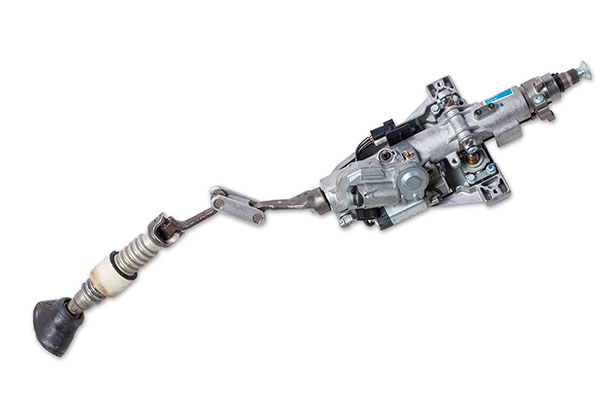
The steering system of a vehicle is a vital component that enables the driver to control the direction of the vehicle however they want. It ensures smooth maneuverability and precise steering response.
While we use the steering wheel all the time, how does it connect to the wheels? Is it magic? The short answer is no, it is a complex mechanism of components that work together to transfer the driver's input to the wheels. If you want the long answer, continue reading because we will take a look at exactly that.
Steering system components covered in the article:
- Steering wheel
- Steering column
- Steering gearbox
- Power steering system
- Pump
- Fluid reservoir
- Knuckle and axle
Steering Wheel
The steering wheel is the primary control "interface" between the driver and the steering system. It also has a variety of other buttons that help you control the car further.
Column
It acts as a connection for various components, including universal joints and a collapsible section for safety. The steering column allows for adjustments in height and tilt to accommodate the driver's preferences.
Steering Gearbox
Also known as the steering rack, the steering gearbox is responsible for converting the rotational motion of the steering wheel into a lateral movement that turns the wheels.
Steering Linkage
The steering linkage consists of various components that transmit the motion from the steering gearbox to the wheels. These components include tie rods, center links, and the pitman's arms. They ensure synchronized movement and most importantly, an accurate representation of the driver's input.
Power Steering System
Modern vehicles are equipped with power steering systems to reduce the effort required to turn the steering wheel, especially at low speeds. Before that, steering mechanisms were fully mechanical or semi-hydraulic - let's say that turning the steering wheel with one finger wasn't a thing.
Steering Pump
In hydraulic power steering systems, a steering pump is responsible for pressurizing the power steering fluid and delivering it to the steering gearbox.
Fluid Reservoir
The steering fluid reservoir, as its name implies, is a reservoir that stores the fluid. It is usually located somewhere under the hood.
Steering Knuckle and Axle
It allows the wheels to pivot left or right as directed by the driver. The steering knuckle is typically attached to the axle, which transfers the rotational force from the steering system to the wheels.
Steering System Repairs At Complete Automotive Repair Specialists, LLC!
Is your steering system having trouble? If so make sure to stop by our shop and we will take a look - no problems pass by in our shop!